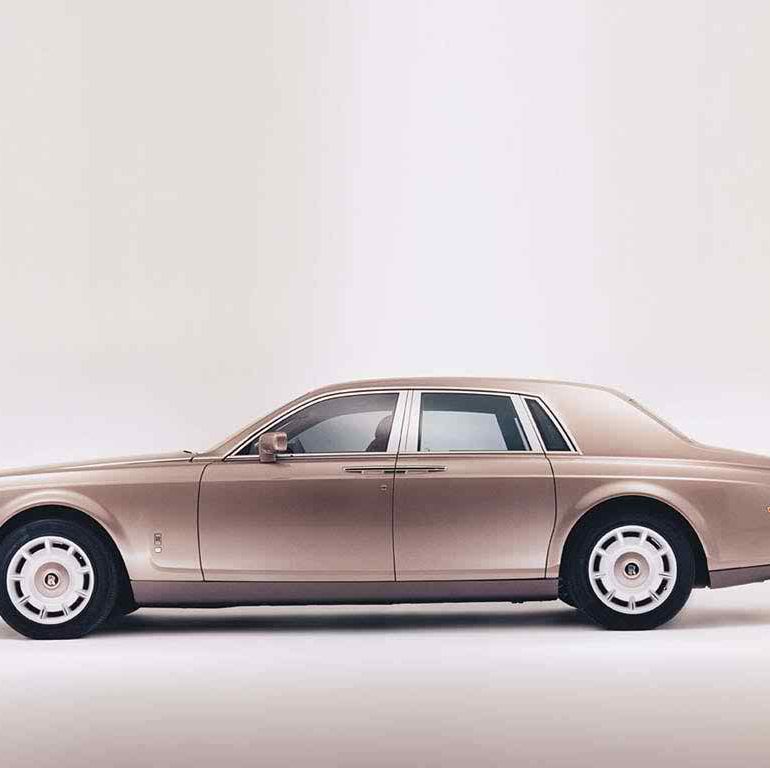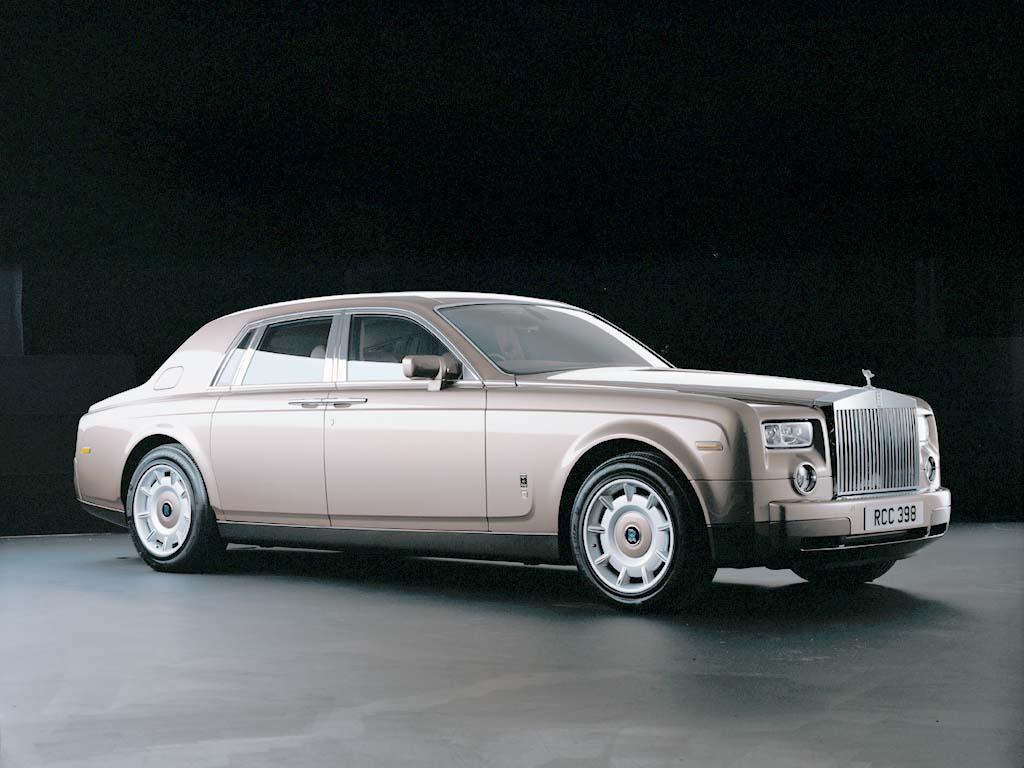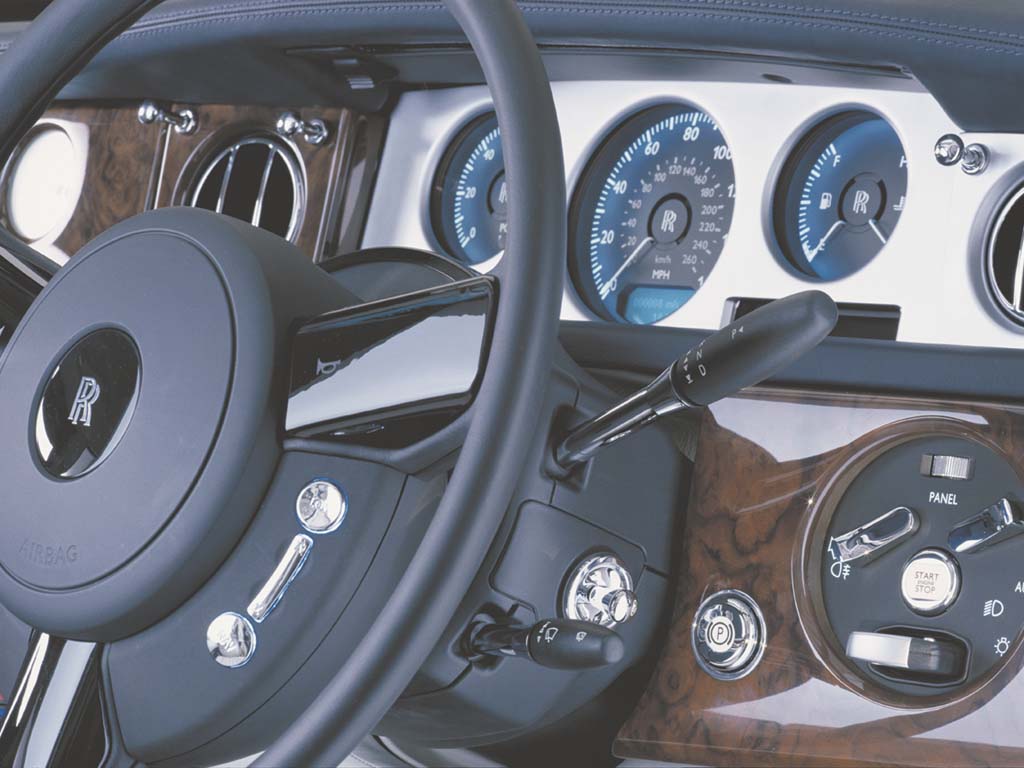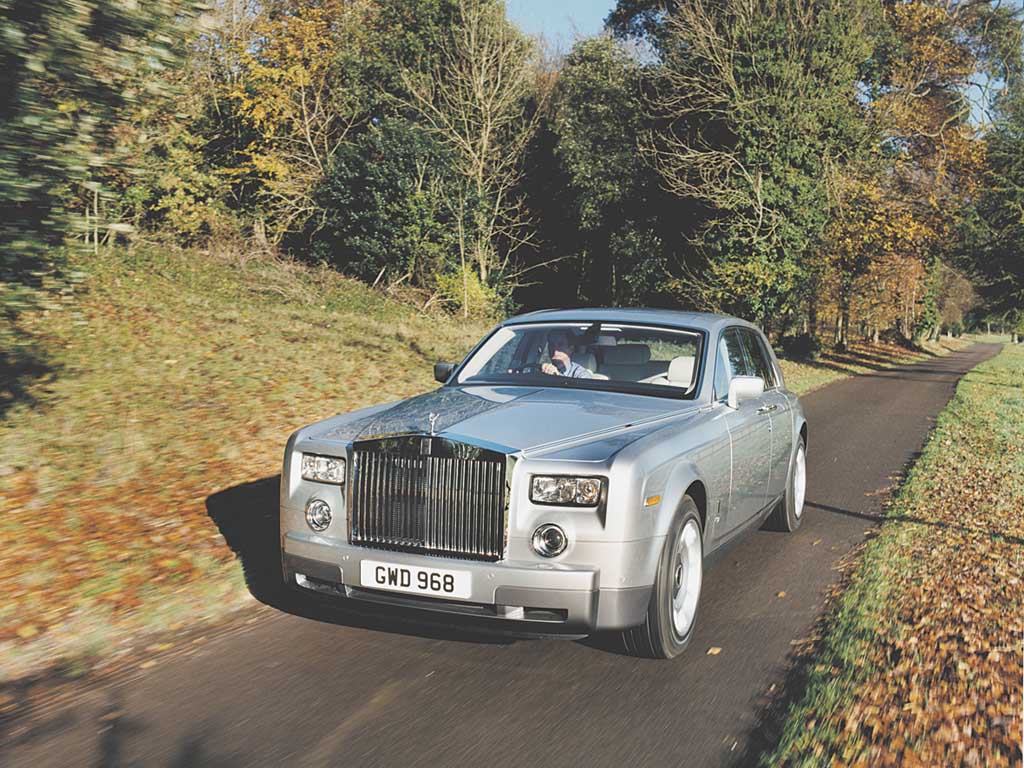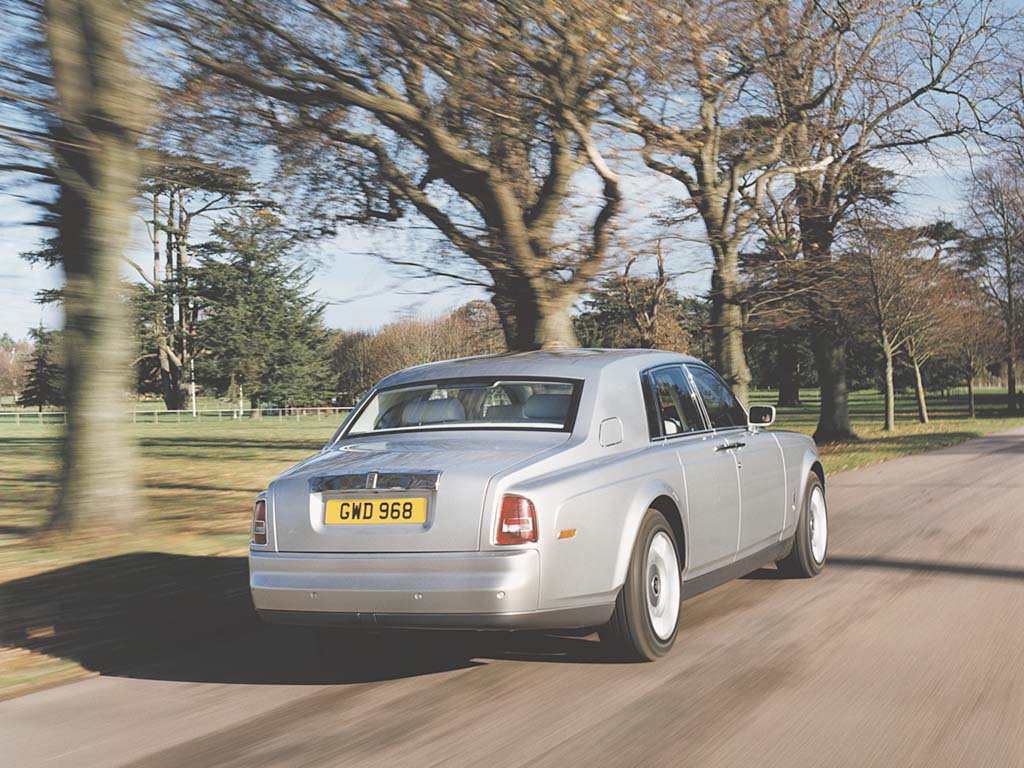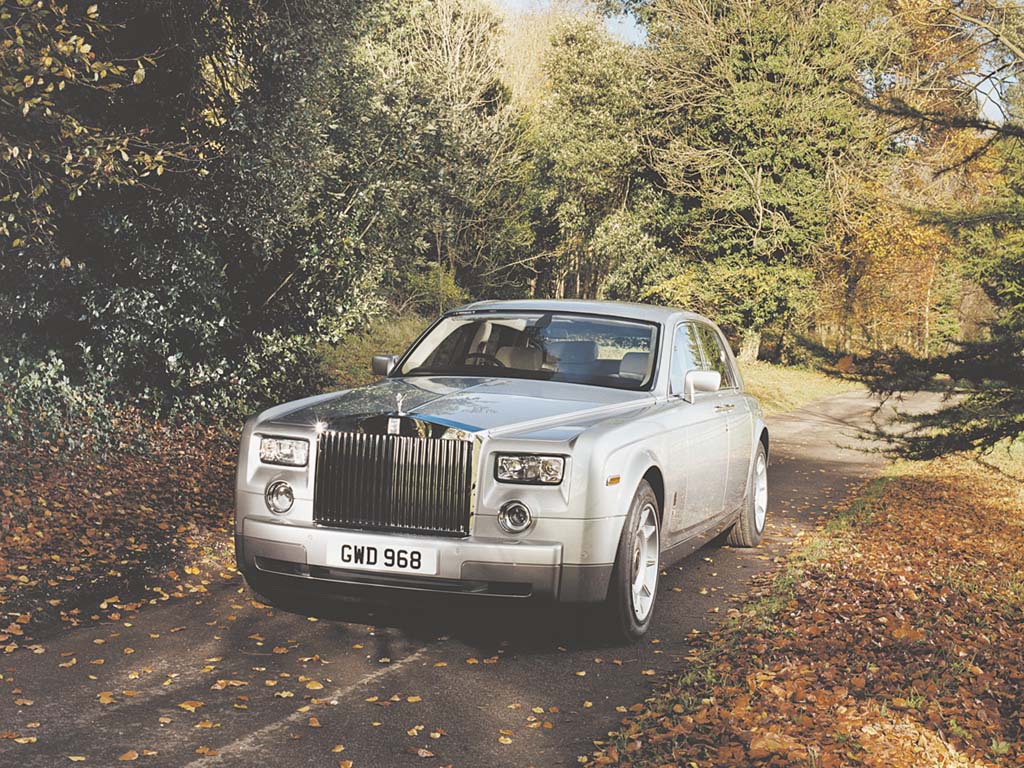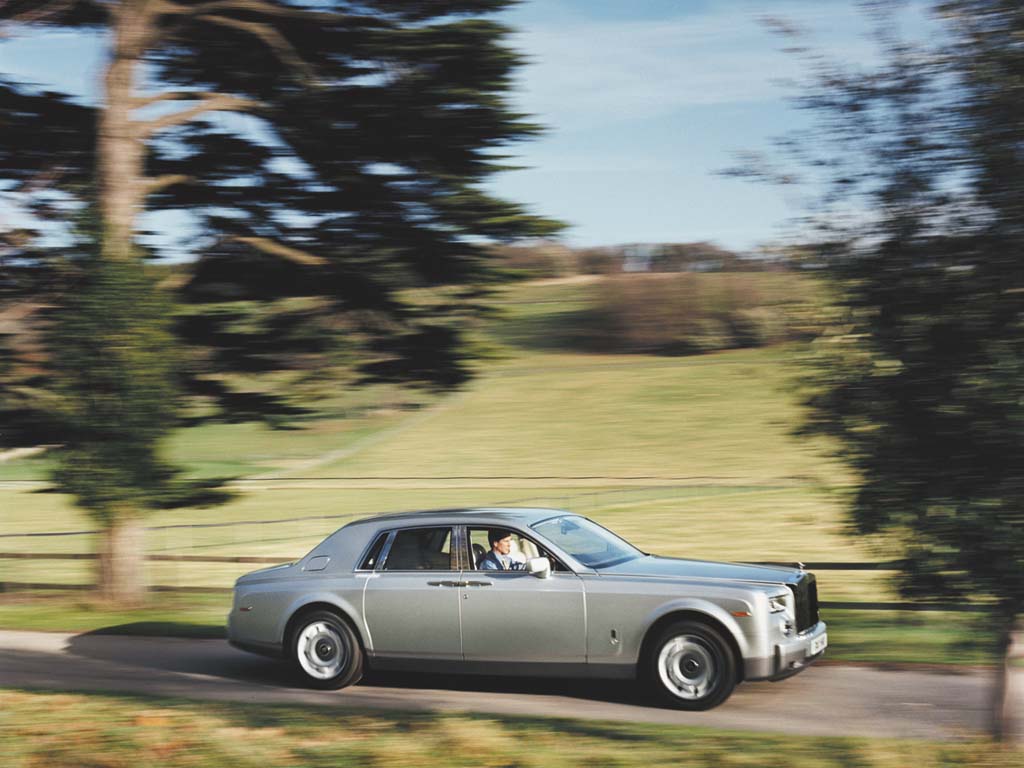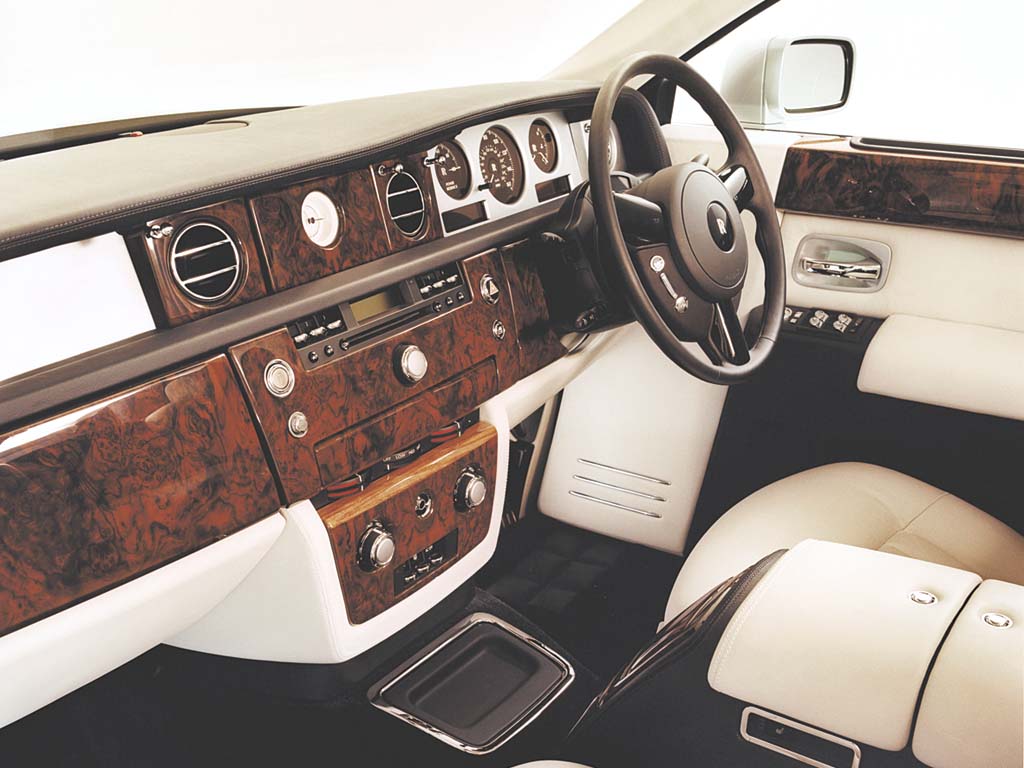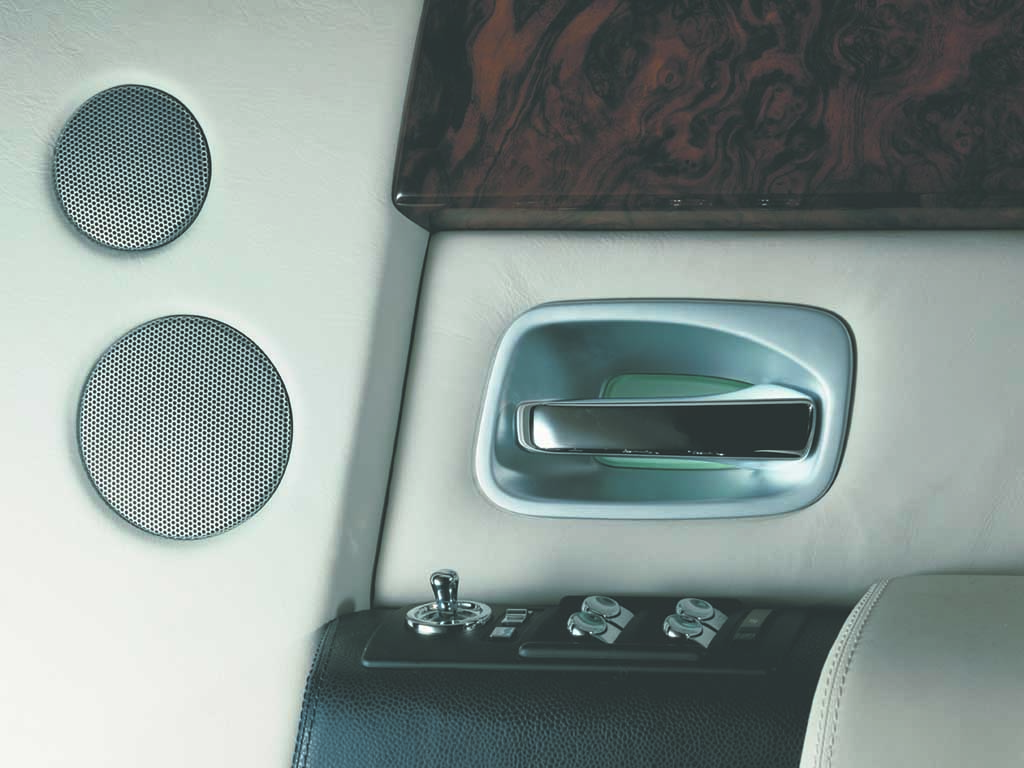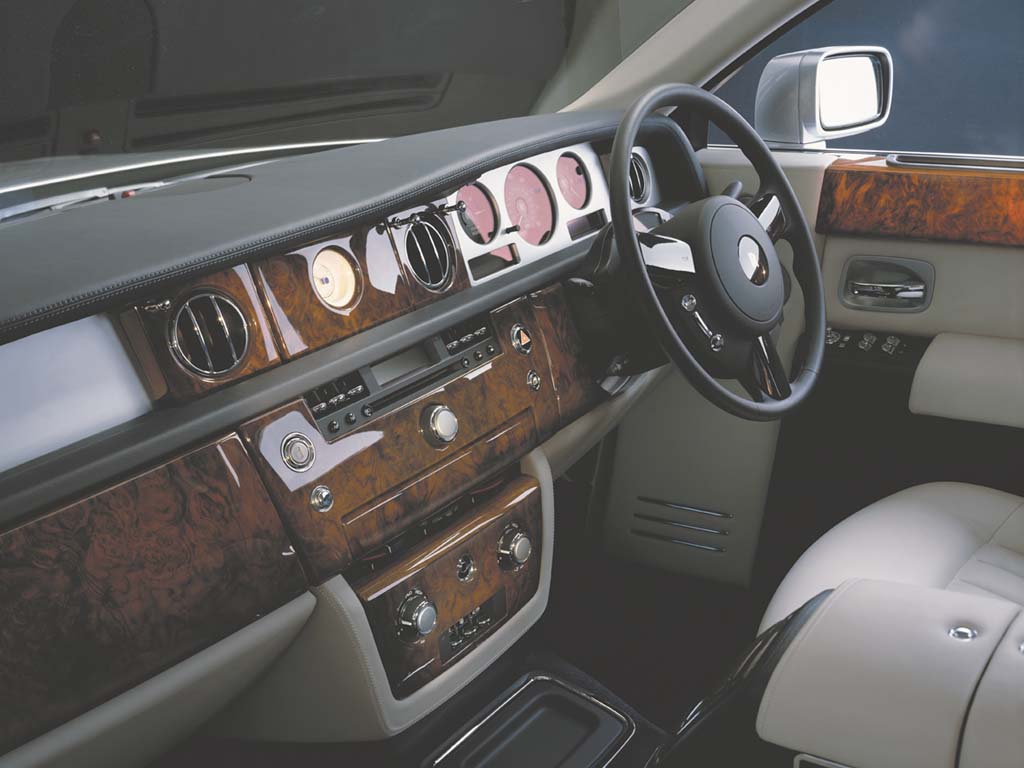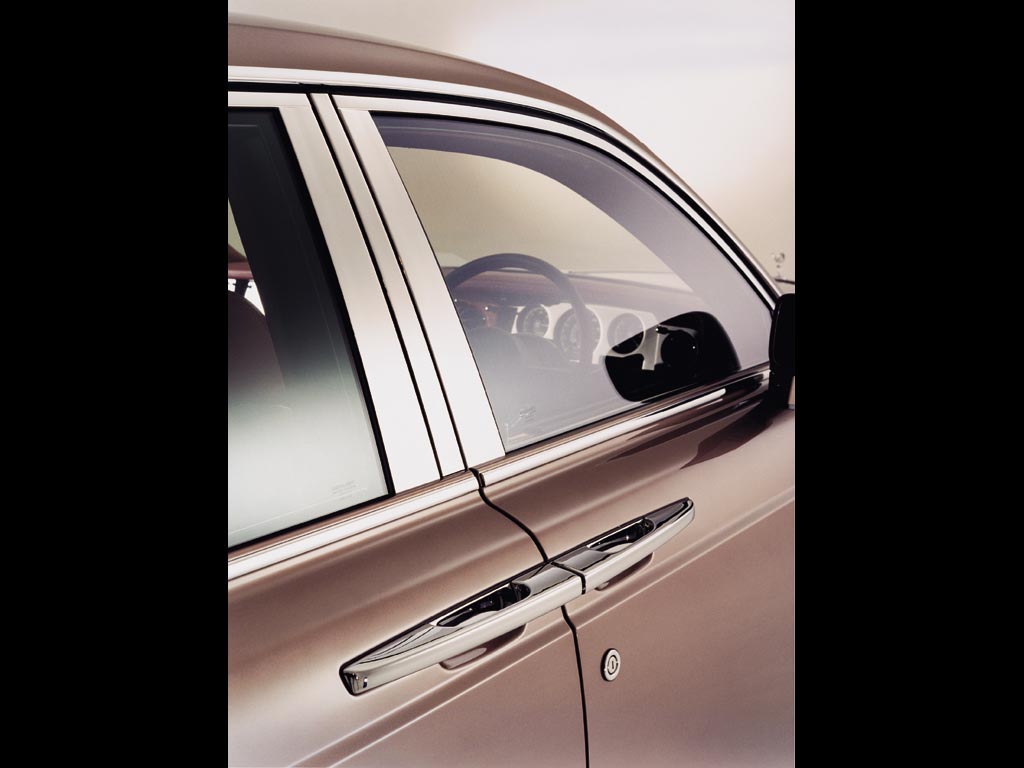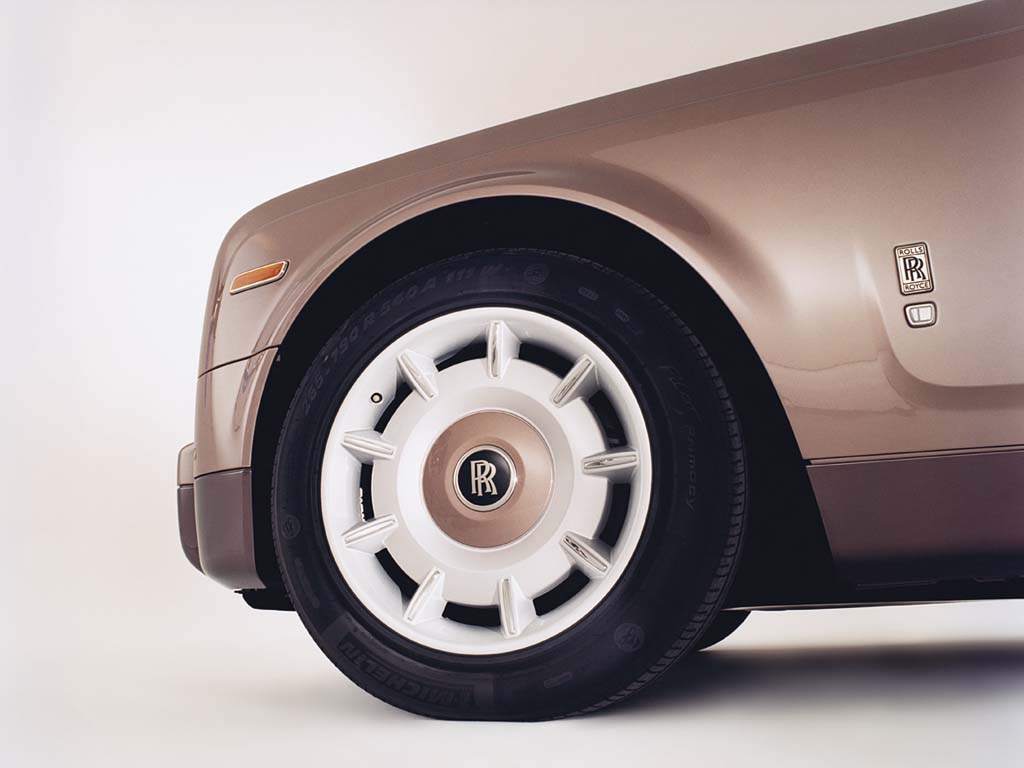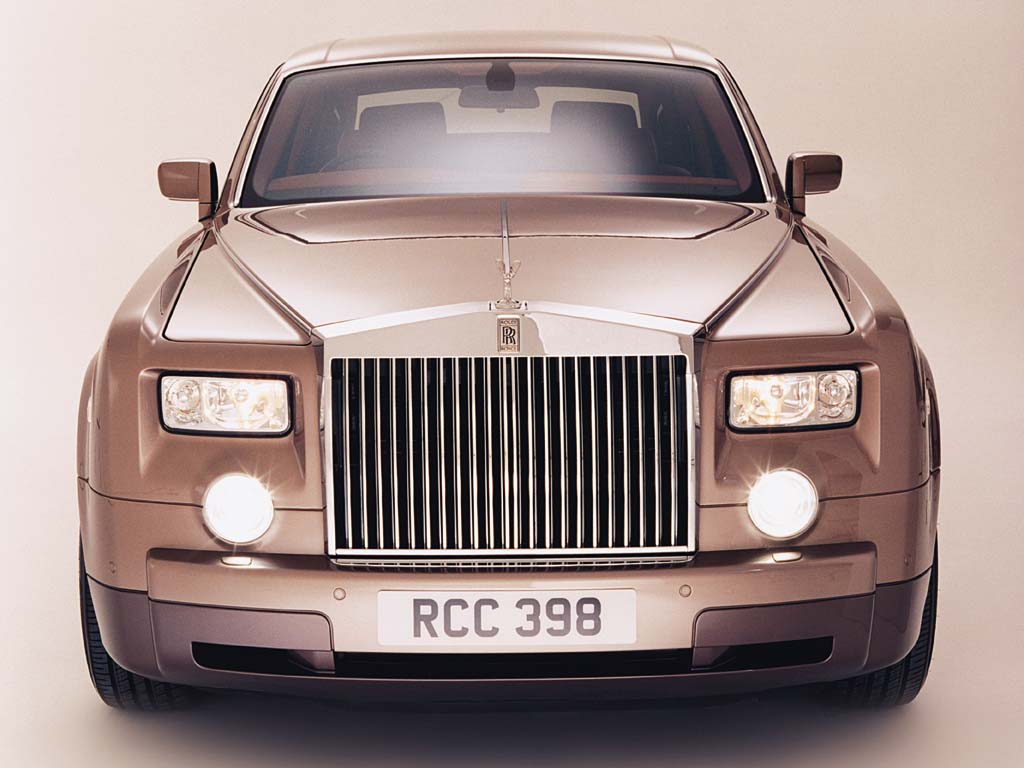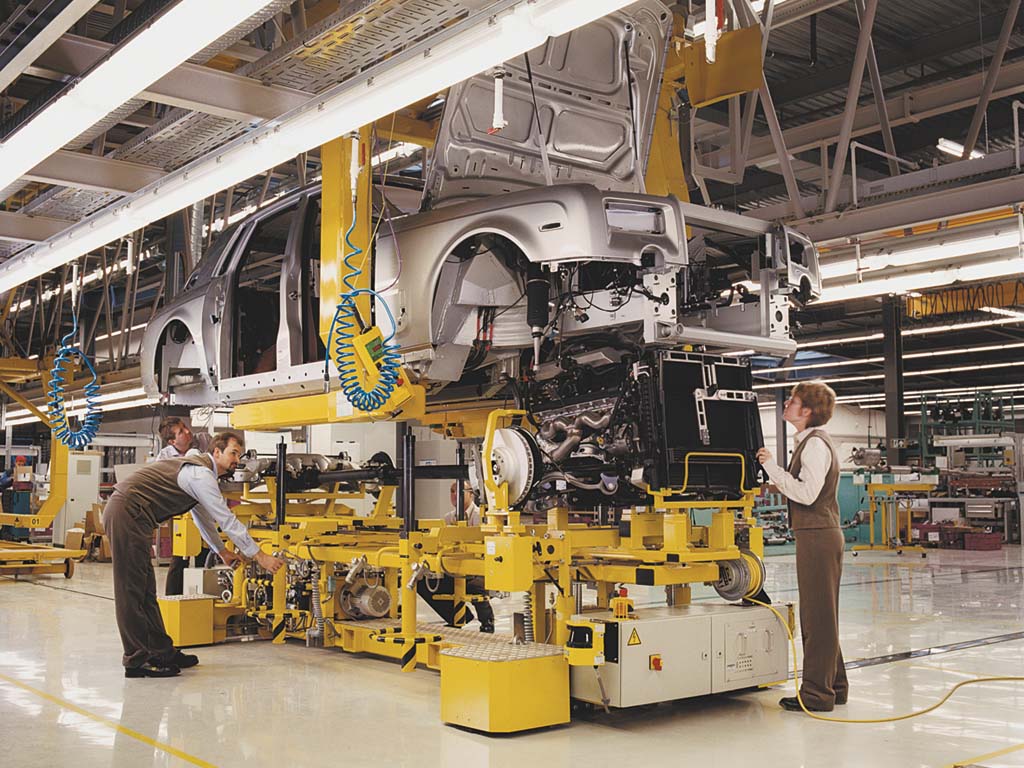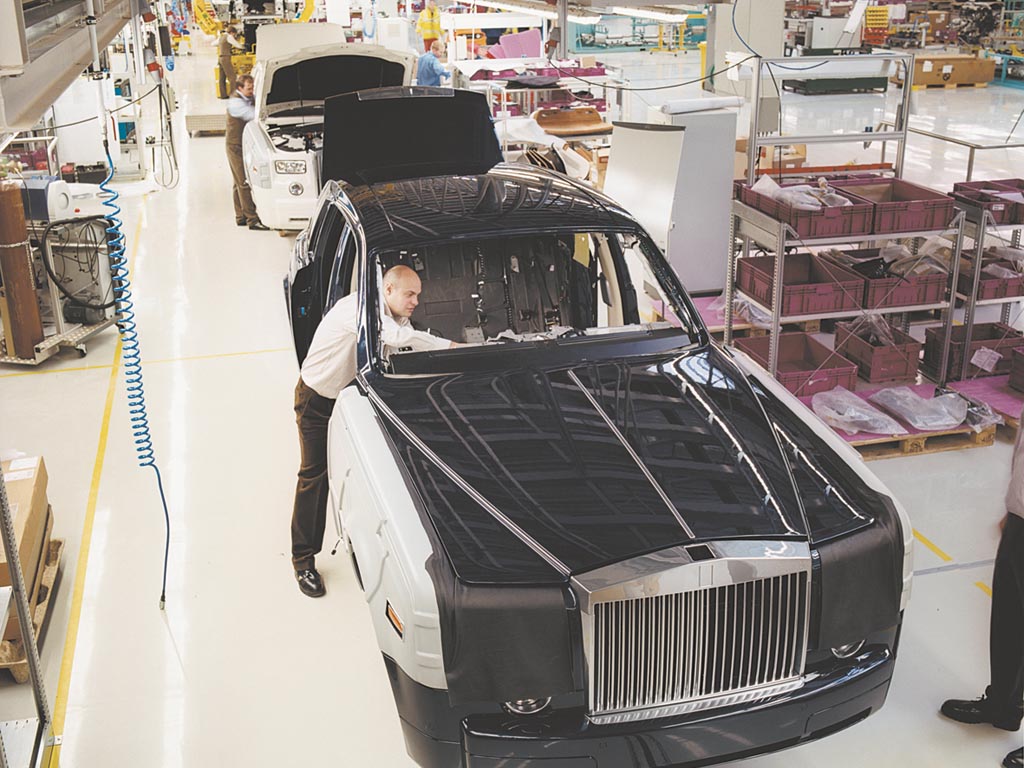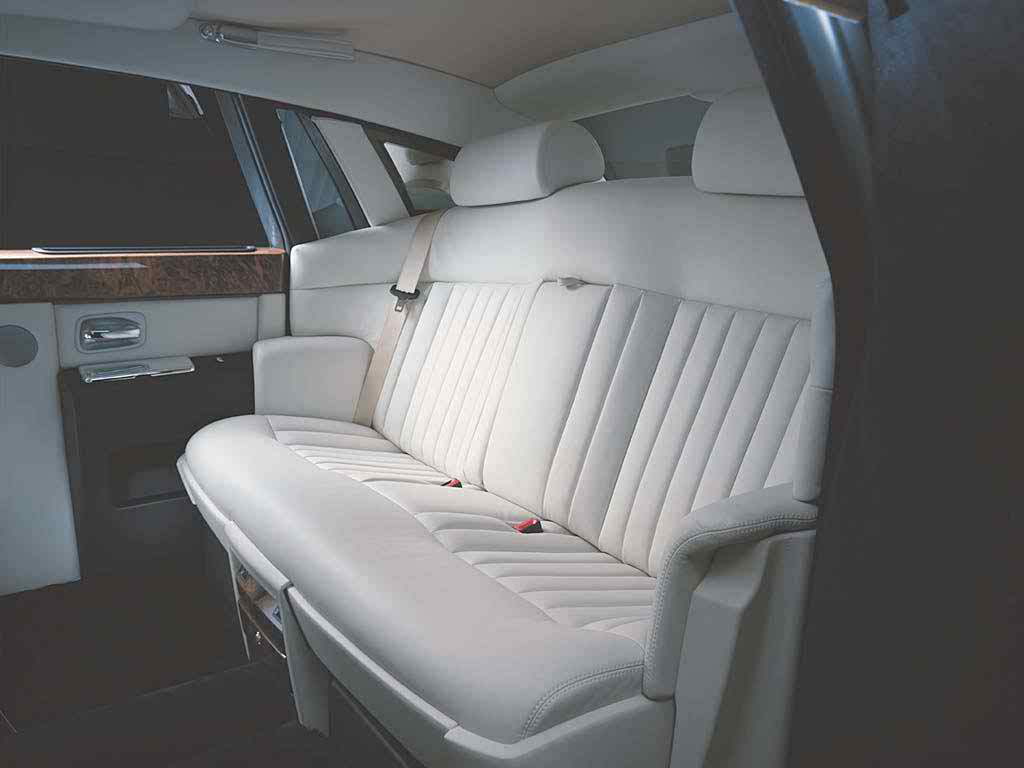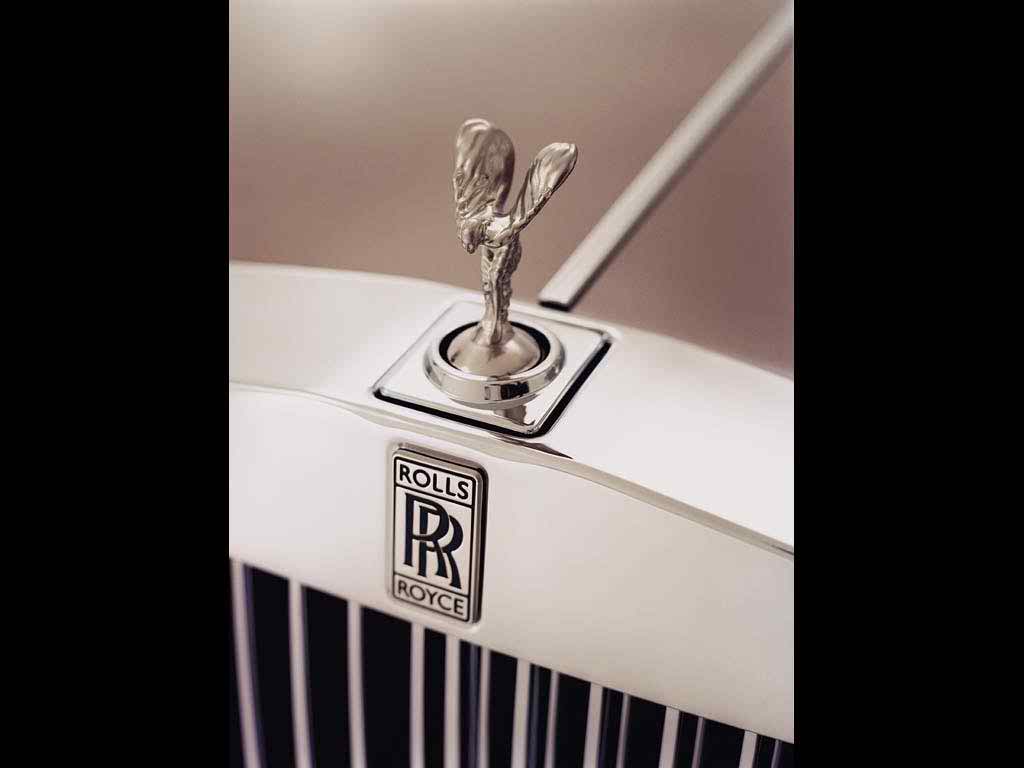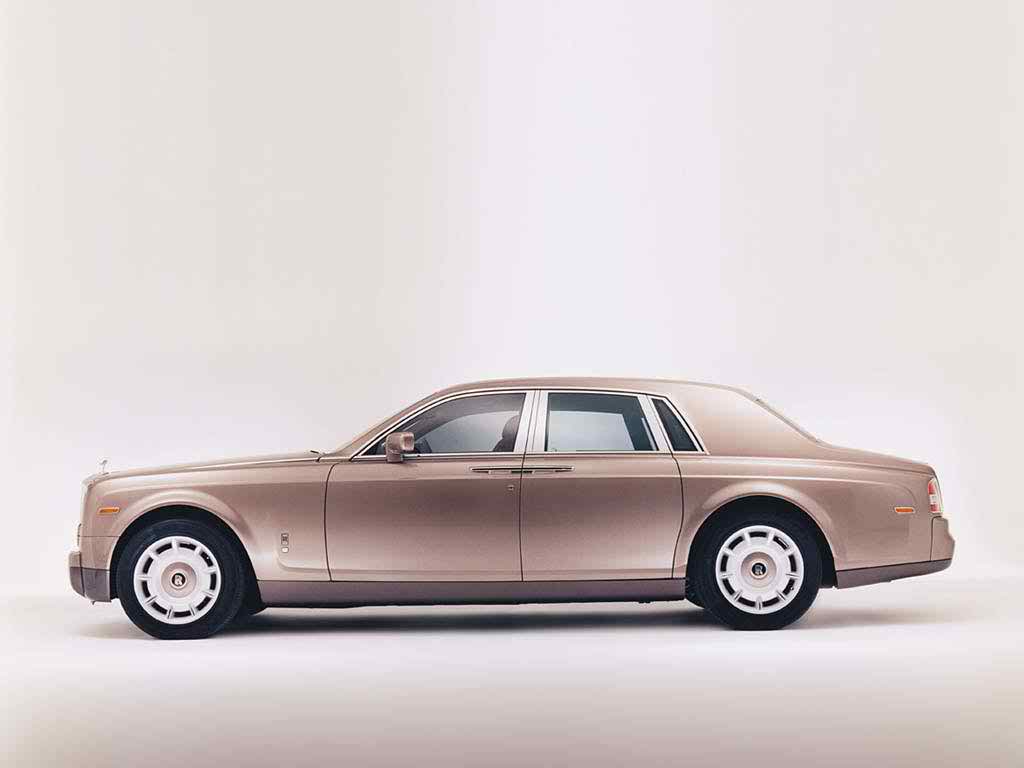2003→2012 Rolls-Royce Phantom
The most luxurious car available on the market is the Rolls-Royce Phantom. It is the the first car produced after the company was bought by BMW and one of the most expensive on the market.
The body and aluminum spaceframe are fabricated entirely in Hallertau, Germany. Over 2000 peices are hand-welded and create the largest automotive spaceframe in the industry. Once completed, these are shipped to Goodwood England for installation of the engine and interior.
The process is England is almost entirely done by hand except for the paint process which is handled by robots. After paint, the tub is installed with foam and tar sheets to reduce interior sound. Furthermore a one-piece magnesium alloy dashboard is fitted which helps reduce rattles.
The interior is fitted with 42 hand-crafted woodwork that uses veneer with a polished laquer finish. For the dashboard, these are bookmarked or bookmatched to have a symmetric pattern on either side. Furthermore, customers can specify custom woodwork which are designed and executed on the production line as par of the bespoke program.
Press Release
Press Release
Rolls-Royce Motor Cars Limited has revealed the all-new Rolls-Royce Phantom today at the company’s new manufacturing plant and head office at Goodwood in West Sussex, UK. It is just four and a half years since BMW Group became the custodians of the Rolls-Royce marque for automotive use, in July 1998, and committed to launch a new company, a new plant and a new motor car in January 2003.
Entirely new from the ground up, the Rolls-Royce Phantom captures the essence of the world’s most famous car brand, interpreted in an utterly modern way. Influenced by the guiding principles of Sir Henry Royce, Strive for perfection in everything you do. Take the best that exists and make it better. When it does not exist, design it, the design and engineering teams began with a blank sheet of paper.
The result is a motor car which incorporates cutting edge engineering technology, unparalleled quality and the finest in hand-built craftsmanship. The Phantom has a light-weight aluminium space frame body, a V12 engine which develops tremendous
power and torque and a style, inside and out, which is every inch a Rolls-Royce.
Designers immersed themselves in the heritage and design principles which had made Rolls-Royce world famous and found particular inspiration in the Phantom I and II models of the 1930s, the Silver Cloud of the 1950s and the Silver Shadow of the 1960s. Features like a long wheelbase, a short front overhang, a deep C-pillar, a long bonnet and a particular stance, which made these motor cars look as if they were lightly accelerating even at a standstill, were fundamental design elements and were incorporated into the new Phantom – quite apart from the famous grille and The Spirit of Ecstasy mascot.
On the inside, the finest leather, Cashmere trim and fitted cabinetry have been used to create an atmosphere which is simple, yet of unquestionable quality. Access is via coach doors, which open from the centre of the car (the rear doors hinged at the back) reminiscent of the classic Rolls-Royce era and which have been chosen to give easy access to the rear. Combined with a flat floor they allow passengers simply to walk in to the rear, turn and sit down. A slightly curved lounge seat helps to create a social environment.
The Rolls-Royce Phantom is easy yet rewarding to drive – something which is vitally important as the majority of owners will drive themselves most of the time. The high
driving position gives an excellent view. Intuitive and effortless to drive, the Phantom is beautifully refined and precise in its responses. Self-levelling air springs, electronic dampers and multi-link rear, double wishbone front suspension combine with the long wheelbase and high profile tyres to give the perfect combination of ride and handling. The large wheels and tyres have been specially developed for the Phantom: it is the first car in the world to feature the advanced PAX run-flat tyre system as standard, which allows the car to run for 100 miles at 50 mph after a puncture.
On the move, the purpose-designed 6.75-litre V12 engine provides huge reserves of power and torque. The Rolls-Royce Phantom will accelerate from 0-60 mph in 5.7 seconds (0-100 kph 5.9 seconds) and on to a limited top speed of 149 mph (240 kph).
Behind the wheel, the low-down torque wafts the Phantom swiftly yet effortlessly from tick-over. Peak torque is 720 Nm (531 lb ft) at 3500 rpm, but more importantly 75 per cent of that total is developed at just 1000 rpm. Maximum power is 460 PS (338 kW).
The latest in combustion technology – variable valve lift, variable valve timing and direct fuel injection – helps produce excellent fuel economy for a motor car of the Phantom’s size and power. On the EU extra urban cycle it returns 25.7 mpg (11.0 l/100 km) and a combined figure of 17.8 mpg (15.9 l/100 km).
As well as the main features of the Phantom, there are a number of delightful detail touches which help to make this such a special motor car – something in which Rolls-Royce has always taken pride. For example; the electrically retractable Spirit of Ecstasy, which can be lowered out of sight whenever the Phantom is parked; the wheel hub centres, bearing the interlinked double-R logo, which remain upright; and the umbrellas which will be found stowed within each rear door.
Tony Gott, chairman and chief executive of Rolls-Royce Motor Cars, says: For nearly 100 years, Rolls-Royce has been the icon of motor engineering and design. The name has entered the language as an expression of perfection. The new Rolls-Royce Phantom is, we believe, entirely in keeping with that long and illustrious heritage, yet is totally contemporary in its design and technology.
Its name evokes the personality of the Phantom I and II models of the 1930s and reflects timeless values of quality, distinction and authority, combining the best of the past with the best modern design, engineering and technology to take Rolls-Royce firmly into the 21st century.
In Detail
| submitted by | Richard Owen |
| type | Series Production Car |
| production years | 2003 – 2012 |
| built at | Goodwood, England |
| body stylist | Marek Djordjevic, Ian Cameron |
| engineers | Helmut Reidl |
| price $ | $ 350,000 |
| price £/td> | £250,000 |
| engine | BMW N73 V12 |
| position | Front Longitudinal |
| block material | Aluminum |
| valvetrain | DOHC w/Valvetronic VVT |
| fuel feed | Direct Fuel Injection |
| displacement | 6749 cc / 411.8 in³ |
| bore | 84.6 mm / 3.33 in |
| stroke | 92 mm / 3.62 in |
| compression | 11.0:1 |
| power | 337.8 kw / 453.0 bhp @ 5350 rpm |
| specific output | 67.12 bhp per litre |
| bhp/weight | 182.29 bhp per tonne |
| torque | 720 nm / 531.0 ft lbs @ 3500 rpm |
| body / frame | Aluminum & Steel Body over Aluminum Spaceframe |
| driven wheels | RWD |
| front tires | PAX 265 x 790 R540 A 111W |
| rear tires | PAX 265 x 790 R540 A 111W |
| front brakes | Vented Discs |
| rear brakes | Vented Discs |
| front wheels | F 26.5 x 54.0 cm / 10.4 x 21.3 in |
| rear wheels | R 26.4 x 54.1 cm / 10.4 x 21.3 in |
| steering | Rack & Pinion w/Speed Sensitive Power Assist |
| curb weight | 2485 kg / 5478 lbs |
| wheelbase | 3570 mm / 140.6 in |
| front track | 1685 mm / 66.3 in |
| rear track | 1670 mm / 65.7 in |
| length | 5834 mm / 229.7 in |
| width | 1990 mm / 78.3 in |
| height | 1632 mm / 64.3 in |
| transmission | ZF 6HP32 6-Speed Auto |
| gear ratios | 4.171:1, 2.340:1, 1.521:1, 1.143:1, 0.867:1, 0.69:1 |
| final drive | 3.460:1 |
| top speed | ~239.8 kph / 149.0 mph |
| 0 – 60 mph | ~5.8 seconds |
| 0 – 100 mph | ~15.2 seconds |
| 0 – 1/4 mile | ~14.2 seconds |
| 0 – 100 kph | ~5.7 seconds |
| drag | 0.383 Cd |


